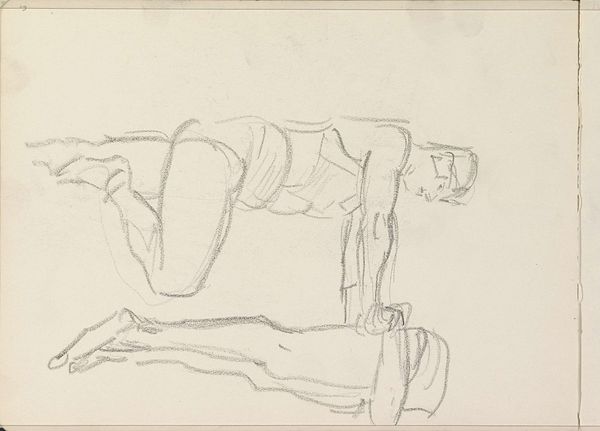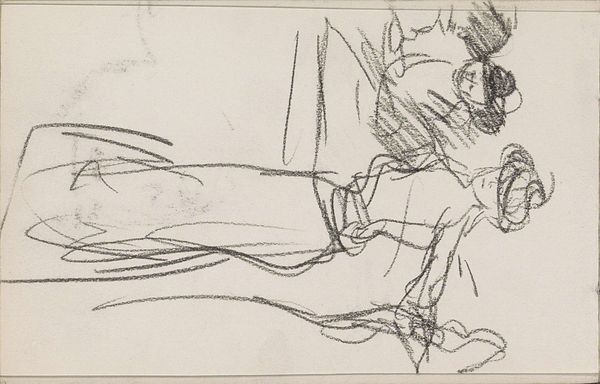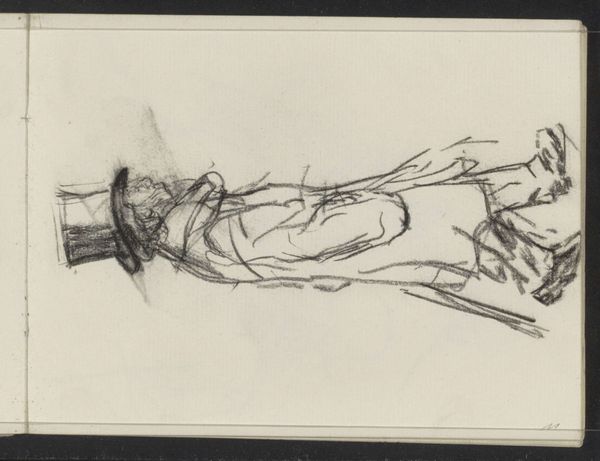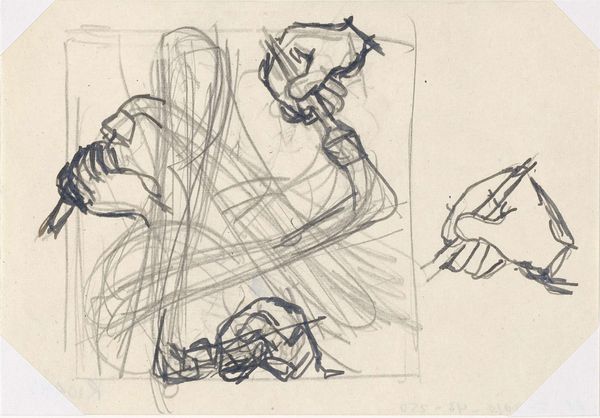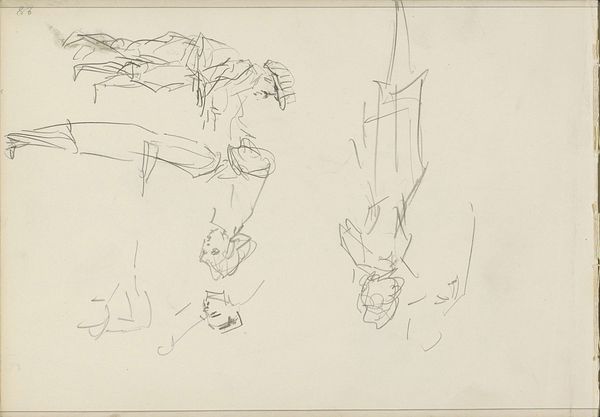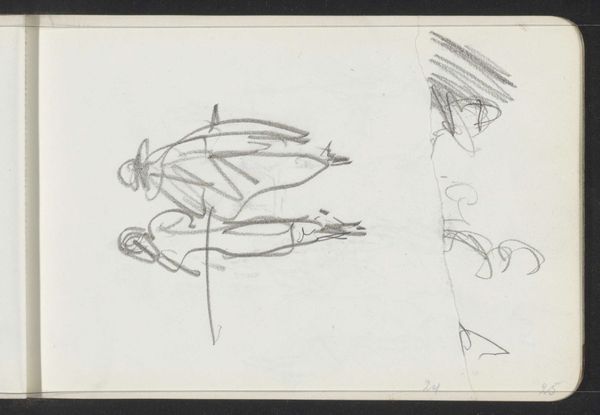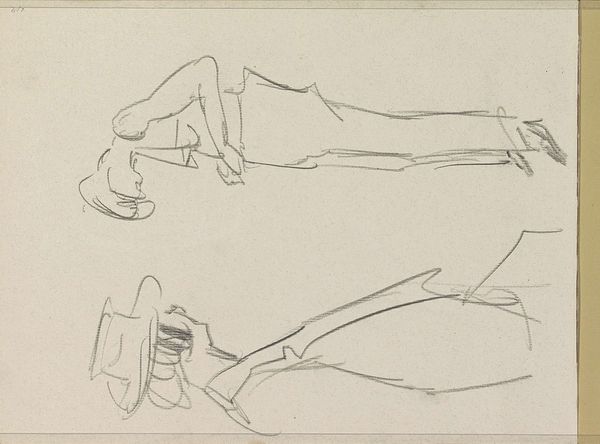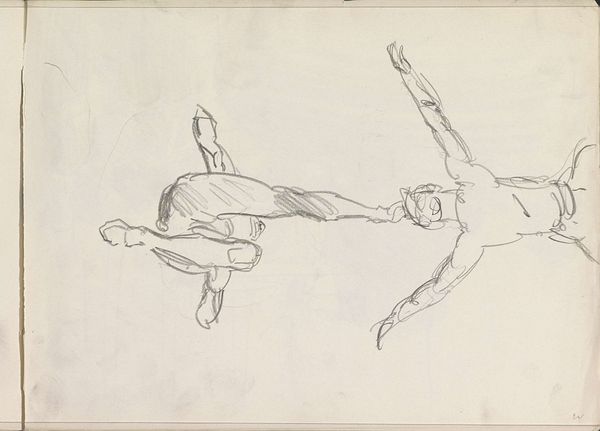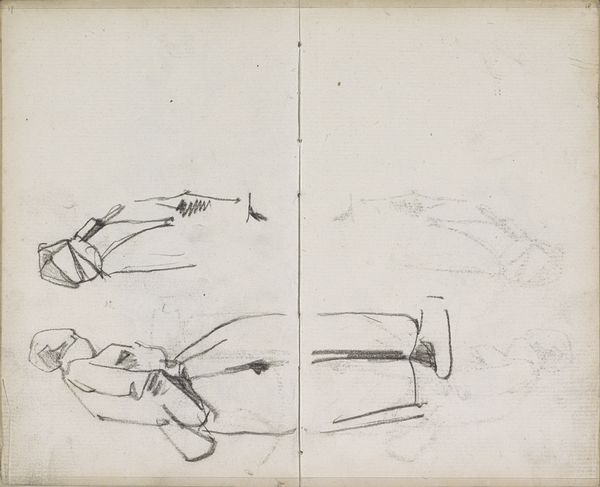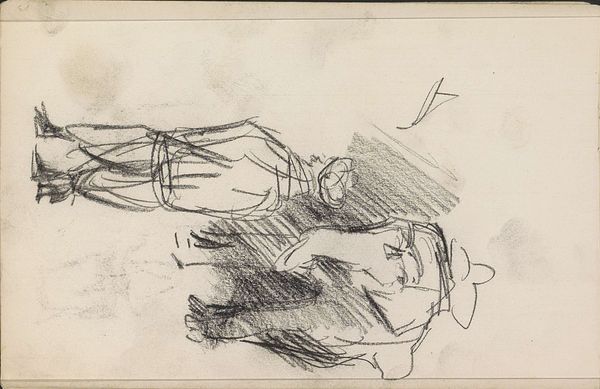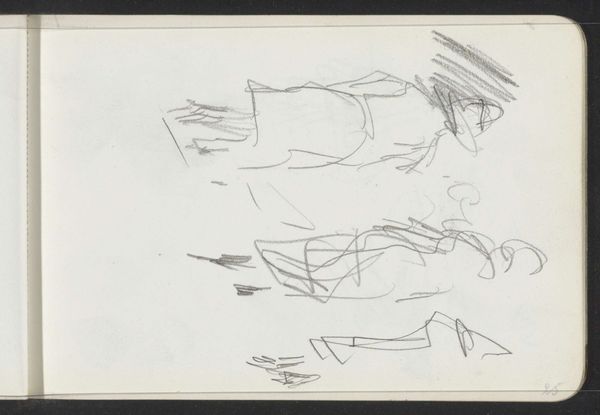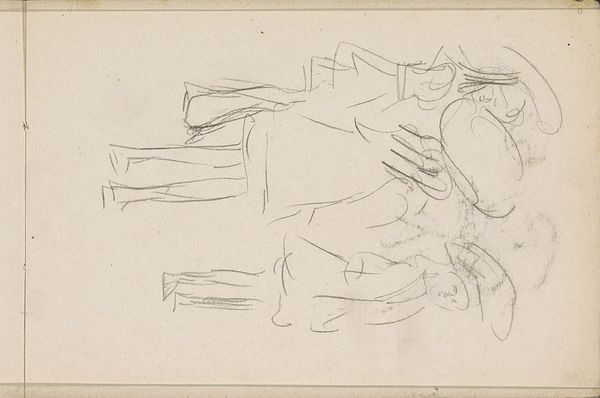
Copyright: Rijks Museum: Open Domain
Editor: Here we have "Two Standing Men Facing Each Other," a pencil drawing by Isaac Israels, made sometime between 1886 and 1934. It feels very immediate and sketchy, almost like a snapshot of a fleeting moment. What can you tell me about this work? Curator: Well, what immediately strikes me is the raw materiality. Look at the pencil strokes themselves - the varying pressure, the smudges. This isn't about illusion; it’s about the direct interaction of the artist's hand with the paper. Consider this within the context of Israels’ labor. Editor: How so? Curator: He was a society portraitist, used to portraying bourgeois clientele with flattering precision. These quick sketches suggest something else - a kind of visual note-taking, a process of observing and recording figures from everyday life, possibly the working class, perhaps preparing to produce more ‘finished’ portraits that are saleable to particular segments of society? Consider who the drawings are made *for*, what class is likely viewing this imagery and where it will be hung. Editor: So, you're saying the value isn't necessarily in the finished drawing itself, but in the process it represents? The act of observing and sketching these figures... Curator: Exactly! It gives insight into his method and, by extension, the means of artistic production. This is raw labor before it's refined for consumption. Think of the paper itself – a mass-produced material, cheap and accessible. It democratizes the artistic process, even if the end result caters to a wealthier patron. What do you think it suggests? Editor: It re-contextualizes the “finished” work, making me question the labor behind the fancy portraits, and highlights the art-making as labor. Thank you for this fresh view! Curator: A worthwhile exchange of ideas!
Comments
No comments
Be the first to comment and join the conversation on the ultimate creative platform.
